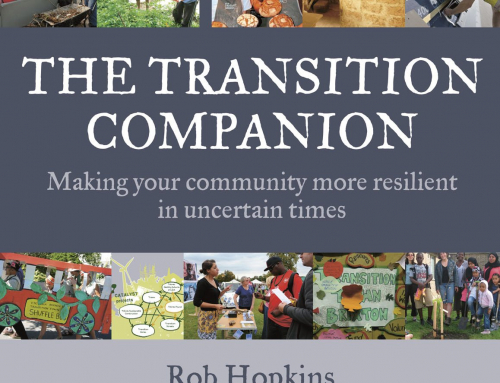Is service design the next big thing after e-everything? If the recent surge in books and conferences is a guide, service design is at least a meme – if not yet a mania.
The trouble is, it can’t possibly be new. Seventy percent of the UK economy is ‘services’, for goodness sake, so someone must have designed them. Service designers look foolish when they claim to be inventing a new profession.
What’s new is an interest in existing public services as potential subjects of re-design. “All service organisations need to find new ways of connecting intimately with their users and customers†say Sophia Parker and Joe Heapy, in a new booklet. They’ve written down a set of service design principles that offer “fresh approaches to organisations seeking to close the gap what they do, and what people want and needâ€.
Do such virtuous organisations exist? The Italians have a great word – “managerialita†– for the obsession with process and targets that so mesmerise politicians and officials. I recently started working with the UK public sector for the first time in thirteen years. The application to what is basically a cultural project (Dott 07) of Key Performance Indicators (KPIs), evaluation protocols, and risk assessment has been, to be frank, bizarre. The fact that everyone around me finds this stuff to be normal is almost as scary as the stuff itself.
Worse is to come. New Labour has swallowed whole and undigested the notion of a ‘self-service’ economy – and its bastard offspring, ‘e-govenment’ – that have been peddled by old-paradigm business professors and ICT firms like Microsoft. “Government will take swift advantage of new technologies as they emerge†trills a Cabinet Office paper on “transformational governmentâ€.â€Over the next decade, the principal preferred channels for the delivery of transactional services will be the internet, telephone and mobile…â€.
Mark these words: “Preferred†means peferred by government and its ICT suppliers, not by normal people. In countless surveys at least 80 percent of citizens say they prefer to communicate with human beings, not with machines.
If the future is about how citizens and service staff can work together and help each other, as Parker and Heapy propose, then the clunky, automated, expensive and top-down e-government threatened by Bill and Tony will be an obstacle to that future, not a support.
The authors interviewed 50 organisations for the book. They sought out organisations “that seek to close the gap between what they do, and what people want and needâ€. Their conclusion: successful services are rooted in “empathy, support, and dialogueâ€. “Spreadsheets are no substitute for people†sthey write; “It is not commodified products or services that we want, it is supportâ€.
The book sets itself a tough challenge: persuading the bean counters and control freaks in government that empathy, support, and dialogue are meaningful indicators of success. Mindful that New Labour is usually impressed by business, most of the book’s exemplars are private providers of health, money, food, and communications – firms like BUPA, first direct, Pret a Manger, Tesco, Orange. Performance metrics exist – in the form of stock price – for these private firms. For example, investors received a 52 percent higher return over five years from shares in companies that make high investment in training.
Parker and Heapy propose a fresh set of building blocks that they hope will enlighten policy makers to new possibilities for change. They write about the ‘touchpoints’, ‘journeys’, ‘channels’, ‘service environments’ and ‘architectures’ of a service. These items, they propose, can be thought of as things to be re-designed.
But a new kind of design. As the book says, “As customers of an airline, we are more likely to remember something about the brand from our interactions with cabin staff than we are from looking at the design work on the tailfin.â€
The mistake would be to imagine that designers shoud take it upon themselves to lead public service reform, unasked. Empathy, listening and co-creation are more important than abstract ‘creativity’ and from-the-front leadership. These qualities do not receive much emphasis in design education, nor in the business models of the design industry. Both need to evolve.
This is a well-written, insightful and important text. I just hope its impact is not diminshed by the arcane title. I can imagine more exciting destinations than a ‘journey to the interface’. And being ‘connected to reform’ is hardly a turn–on. Ghastly buzzwords also intrude from time to time in a generally clear narrative. What on earth is “channel migration†for example?
Right at the end of the book I realised that this insider language may have been left in the book as bait to entice its intended readership. A concluding Agenda of Action is addressed, by name, to The Treasury, The Cabinet Office, ‘Delivery Departments’ (which I think means ministries), The Audit Commission, Local Authorities, and service delivery organisations. If the mention of channel migration turns this bunch on to service design, then these rare crime against language may turn out to have been justified.
A better if more vulgar title would have been: “Six Secrets of Successful Serviceâ€. A large commercial publisher should commission the authors to write a best-seller based on this excellent and important pamphlet.
The journey to the interface: how public service design can connect users to reform. By Sophia Parker and Joe Heapy. Demos, London, 2006.



